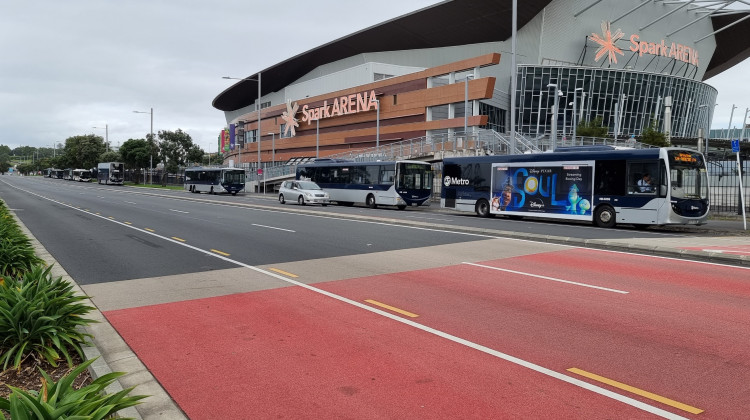Guidance on planning and design considerations for bus driver facilities.
Different driver facilities are required to serve different types of bus layovers depending on how long the driver will be stationed at the layover and whether a meal break will be taken.
The following table provides guidance on the types of facilities expected at each type of layover for the application of these design guidelines.
Guidance of driver facilities at bus layovers
|
Driver facility |
Short term (rest break generally up to 15 minutes) |
Long term (but not used for rest / meal breaks) |
Meal breaks (generally 30 minutes in duration) |
|
Toilets |
R* |
M* |
M* |
|
Showers/ changing facilities |
N |
N |
D |
|
Kitchen/ cooking facilities – kettle, microwave, toaster |
N |
N |
M |
|
Dining facilities – tables and chairs |
N |
N |
M |
|
Lounging facilities (sofa) |
N |
N |
D |
|
Lockers |
N |
D |
D |
M = Mandatory
R = Recommended
D = Desirable
N = Not generally required
*Refer to the following section for further details.
Of the driver facilities outlined above, the most basic yet important facilities are toilets. Where driver breaks are taken at the layover space, access to toilets must be provided. This can be a designated driver-only toilet facility, a nearby public toilet facility or an arrangement to use nearby private toilet facilities (such as petrol stations).
For private toilet facilities it is recommended that the public transport contracting authority or operator enter into a formal arrangement with the facility owner to ensure continued access to these facilities. Consideration could be given to issuing keys to public transport operators if opening hours for public or private toilet facilities differ from public transport operating hours. Safety precautions should also be considered in these situations as late timetables can place a driver in an isolated or unmanaged facility or area.
It is recognised that many suburban bus layover locations do not currently provide access to nearby toilet facilities.
Methods to install toilets whilst maintaining residential amenity values can include:
If it is not possible to provide driver toilet facilities at, or near, bus layovers then other responses may be considered, such as changing the design of a bus route, changing the scheduling or bringing drivers back to the depot. It is generally more preferable to provide toilet facilities at layovers though as these other responses can be associated with increased out of service running, non-optimal routing and thus long-term operating costs (and other externalities) which need to be fully considered.

Example of toilet facility adjacent to bus layover which has been incorporated into Victoria Park, Auckland (Source: Thomas Chu).
Driver facilities (including toilets, showers, kitchen, dining facilities and lockers) may be contained within a designated area of a public transport interchange or as a separate building. The advantage of locating all driver facilities within one area is that it can be separated from the public areas and is more convenient for drivers.
Examples of driver facilities (Source: Auckland Transport)

Driver facilities contained within separate building.

Amenities can include dining facilties, lockers and kitchen.

Driver facilities located within public transport interchange.

Kitchen amenities at the driver facilities within public transport interchange.
Due to space and consenting constraints it may be necessary to locate driver facilities separate from layover spaces. If the driver facilities are in a separate location, then the walk time to and from the driver facilities needs to be considered in the scheduling of driver breaks. Driver facilities need to be in a convenient location for bus drivers and therefore the recommended maximum distance between bus layovers and driver facilities is 300m.
The location of driver facilities should minimise the opportunity for crime and enhance perception of safety. Safety and security are important considerations because bus services can operate late into the night and bus drivers are required to carry cash boxes as part of their job. Therefore, driver facilities should be located in areas which are:
Where the layover spaces and driver facilities are separated, the safe movement of drivers to and from the driver facilities also needs to be considered. This could include provision of well-lit walkways (because driver facilities will be used after dark) and safe crossings of streets.
In order to minimise the potential impacts on amenity from driver facilities, the following should be considered:

Example of bus layover which is located away from street frontages from Quay Street, Auckland (Source: Thomas Chu).